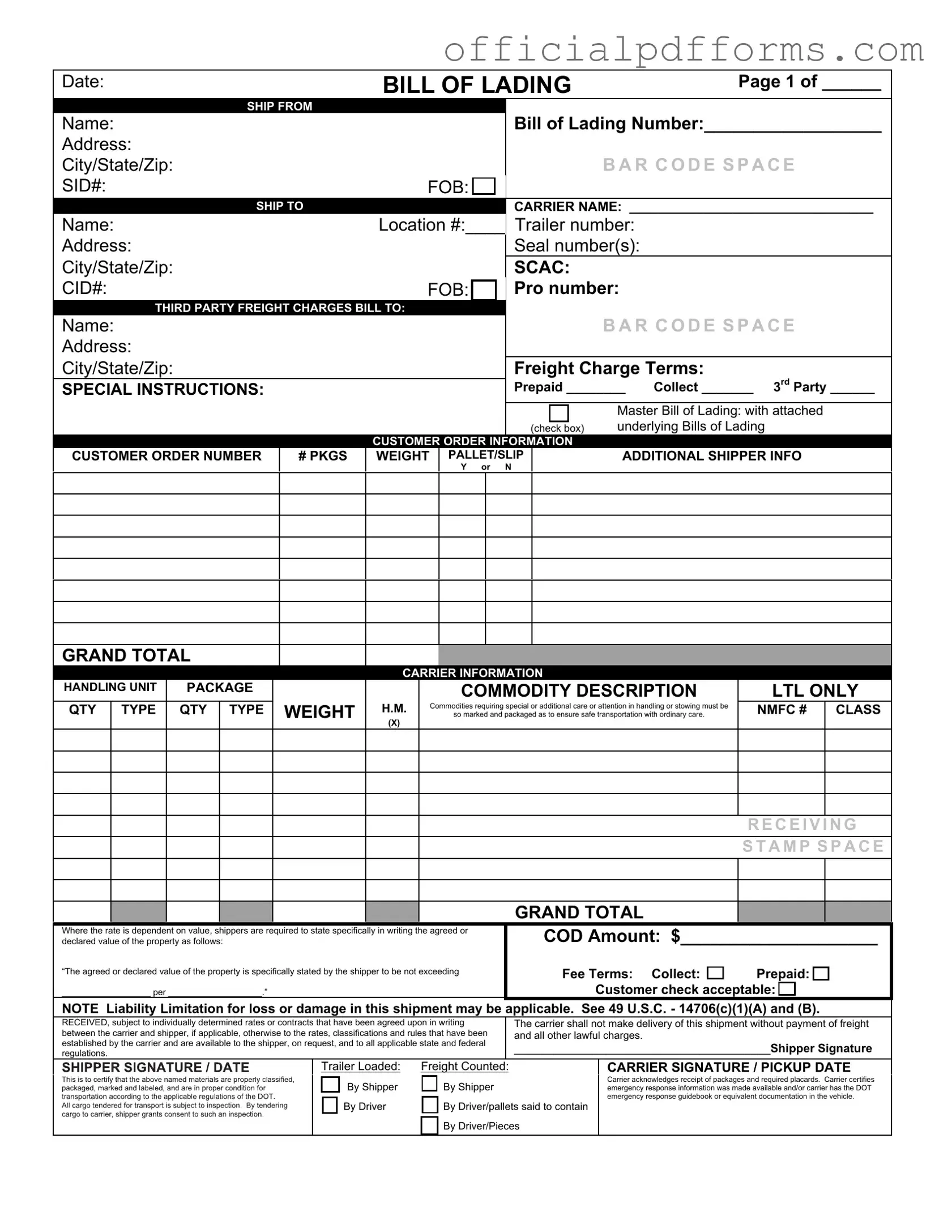What is a Bill of Lading with a Supplement?
A Bill of Lading with a Supplement is a legal document that serves as a receipt for goods being shipped. It outlines the details of the shipment, including the type and quantity of goods, the origin and destination, and the terms of transportation. The supplement portion allows for additional information or terms to be included, which can be important for specific shipments or special conditions.
Why is a Bill of Lading important?
The Bill of Lading is crucial for several reasons:
-
Proof of Ownership:
It acts as proof that the shipper has ownership of the goods until they are delivered.
-
Legal Protection:
It provides legal protection for both the shipper and the carrier by outlining the terms of the agreement.
-
Facilitates Payment:
It is often required for payment processing, ensuring that carriers are compensated for their services.
Who issues the Bill of Lading?
The carrier or freight forwarder typically issues the Bill of Lading. This document is created when the goods are loaded onto the transport vehicle, whether that be a truck, ship, or airplane. The shipper must provide accurate information to ensure the Bill of Lading reflects the correct details of the shipment.
The Bill of Lading with a Supplement generally includes the following information:
-
Shipper and consignee details
-
Description of the goods
-
Quantity and weight of the shipment
-
Origin and destination addresses
-
Shipping terms and conditions
-
Any additional notes or special instructions in the supplement
Can a Bill of Lading be amended?
Yes, a Bill of Lading can be amended, but this typically requires agreement from both the shipper and the carrier. Changes may be made to correct errors or to include additional information in the supplement. It is important to document any amendments properly to maintain legal validity.
What happens if a Bill of Lading is lost?
If a Bill of Lading is lost, it can complicate the shipping process. The shipper should immediately notify the carrier and may need to provide a sworn statement regarding the loss. In some cases, a duplicate Bill of Lading can be issued, but this process may vary depending on the carrier's policies and local laws.
Is a Bill of Lading legally binding?
Yes, a Bill of Lading is a legally binding document. It outlines the rights and responsibilities of all parties involved in the shipment. Failure to comply with the terms set forth in the Bill of Lading can result in legal consequences, including financial liability.
How does the Supplement affect the Bill of Lading?
The Supplement allows for additional clauses or terms that may not be covered in the standard Bill of Lading. This can include special handling instructions, liability limitations, or specific conditions for delivery. Including a Supplement can provide clarity and protection for unique shipping situations.
